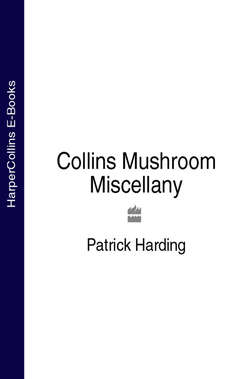Читать книгу Collins Mushroom Miscellany - Patrick Harding - Страница 12
Climate Change
ОглавлениеFly agaric Amanita muscaria
On the last day of June 2007I was walking, with my wife Jean, around the reservoirs that feed the fountains and waterworks of the Derbyshire gardens at Chatsworth. As we came to an area of mature birch trees Jean went off in search of fly agarics (Amanita muscaria). ‘I think you are being a bit optimistic’, I said, ‘they rarely fruit before September’. Minutes later Jean pointed triumphantly to the white-spotted, red cap that was pushing through the soil. One swallow does not make a summer, but this first fruiting date for fly agaric was nearly 2 months earlier than local ‘first’ records collected during the 1970s.
With the growing reality of climate change, there have been frequent media reports indicating that the first flowering date of some of our common spring flowers is, on average, many days earlier than records from 40 or 50 years ago. The records of first flowering dates made by Victorian naturalists has enabled comparisons to be made over a time-scale as long as 150 years. At the other end of the season, many British deciduous trees are keeping their leaves well into November; the average date of leaf fall is getting later. Such records have led to a growing interest in phenology, the study of the seasonal timing of life-cycle events such as the deposition of frog spawn.
Anecdotal evidence that the fruiting season for some fungi is both starting earlier and finishing later is supported once again by my own observations of fly agaric. Since the early 1990s I have featured on numerous television programmes about Christmas, with particular reference to a link between Father Christmas and the red and white fly agaric (see here). In the Gem Mushroom book first published in 1996,I noted that the season for fly agaric was ‘late summer to early winter’, finishing by the end of November. This meant that fruiting had finished before I was filmed for the Christmas programmes and I had to make do with models. In 2006, when filming for the Christmas sequence of Castle in the Country, I was able to use real fly agarics for the first time; they carried on fruiting well into December that year.
Unlike the long sequence of records made by thousands of amateur botanists and ornithologists (listening for the first cuckoo), it is only recently, with the formation of more county fungus groups, that there have been sufficient, reliable, annual fungal records from which first and last fruiting dates for a local area can be ascertained. Two members of the Salisbury and District Natural History Society ensured that for part of south Wiltshire and the New Forest there would be fungal records going back to the 1950s. Ted Gange and Jim Hindley documented their sightings of over 1,000 different species and over the years built up some 55,000 dated records which have recently been analysed by, among others, Ted’s son Alan.
Of the spring fruiting mushrooms, the average first fruiting date for morel (Morchella esculenta) in the 1950s, in their area, was 13th May. By 2006 the average had moved to 3rd April, some 40 days earlier. Earlier fruiting was found to be closely linked to a significant increase in average February temperatures over the same period. St George’s Mushroom (Calocybe gambosa) first appeared around 17th May in the 1970s, but by the 2000s it was averaging 22nd April, the day before St George’s Day. Work with other species has shown that many fungi that previously fruited in autumn now also fruit in spring. Fairy ring champignon (Marasmius oreades) rarely appeared before September in the 1950s, but recent records show that it now starts fruiting as early as June. Other autumn fruiters (such as fly agaric) have been extending their fruiting season by starting earlier in the summer and ending much later. From an average autumn fruiting season of 33 days in the 1950s, the season for some species has lengthened to as much as 75 days. These changes are mirrored by a 50 year decline in the frequency and severity of pre-Christmas frosts in that part of southern England.
Many of these seasonal changes in fungal fruiting times are much greater than those recorded for flowering plants. The longer fruiting periods of many fungi are probably indicative of increased vegetative activity. It has been calculated that compost heaps are now rotting (largely thanks to fungi) at twice the rate they did 50 years ago. It has also been found that fungal species that decay wood and leaf litter are doing so at an enhanced rate. This means that trees (and other plants) should be growing more quickly owing to the greater availability of nutrients resulting from increased fungal recycling. On a more prosaic level, mushroom hunters need to adjust their diaries to take account of the changing season of availability of many edible species.
Climate change has also resulted in more extremes of weather, as exemplified by the very heavy rainfall and associated flooding in the summer of 2007. Such extremes have less effect on the timing of fungal fruitbodies, but they do influence the numbers. The abnormally wet June and July produced a wonderful harvest of truffles in many parts of southern Britain, proving that every cloud has a silver lining.
St George’s mushroom –Calocybe gambosa.
{Brian Hawkes/NHPA}
